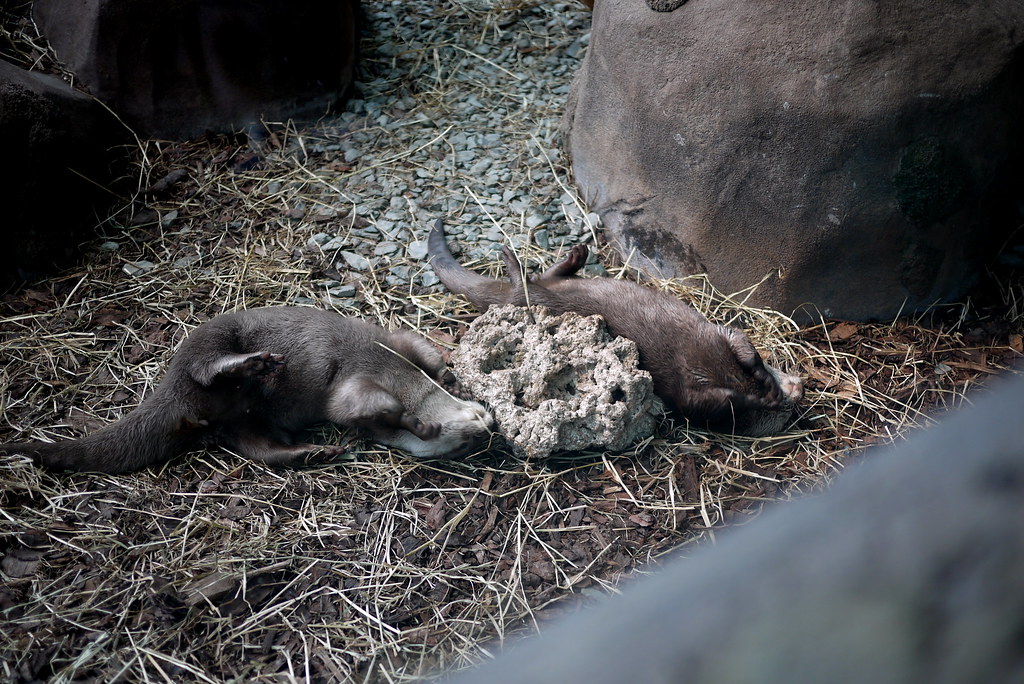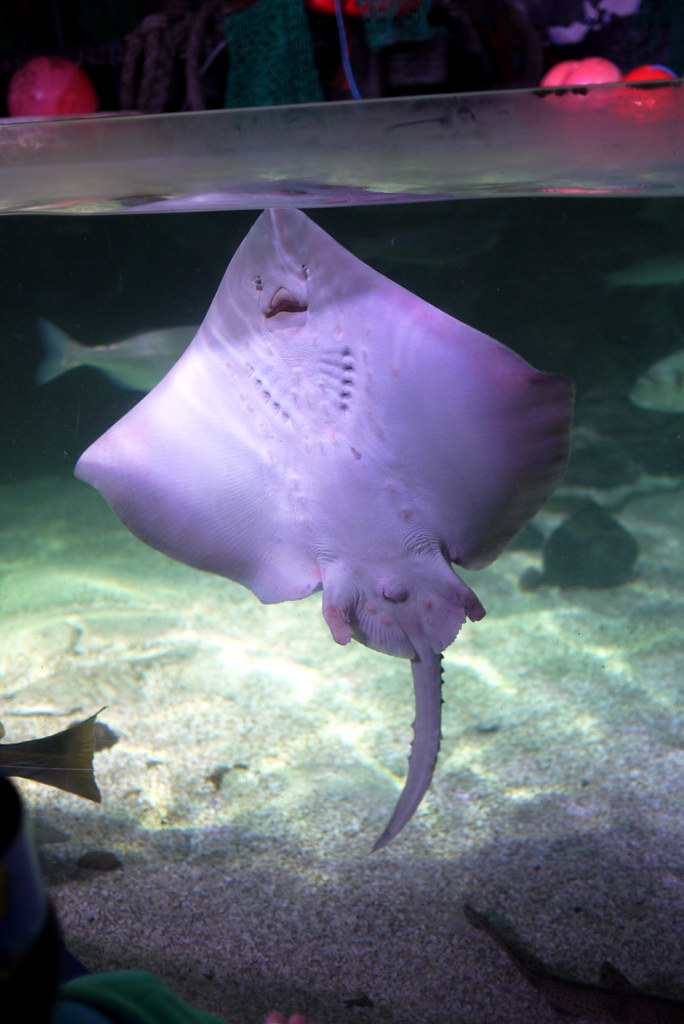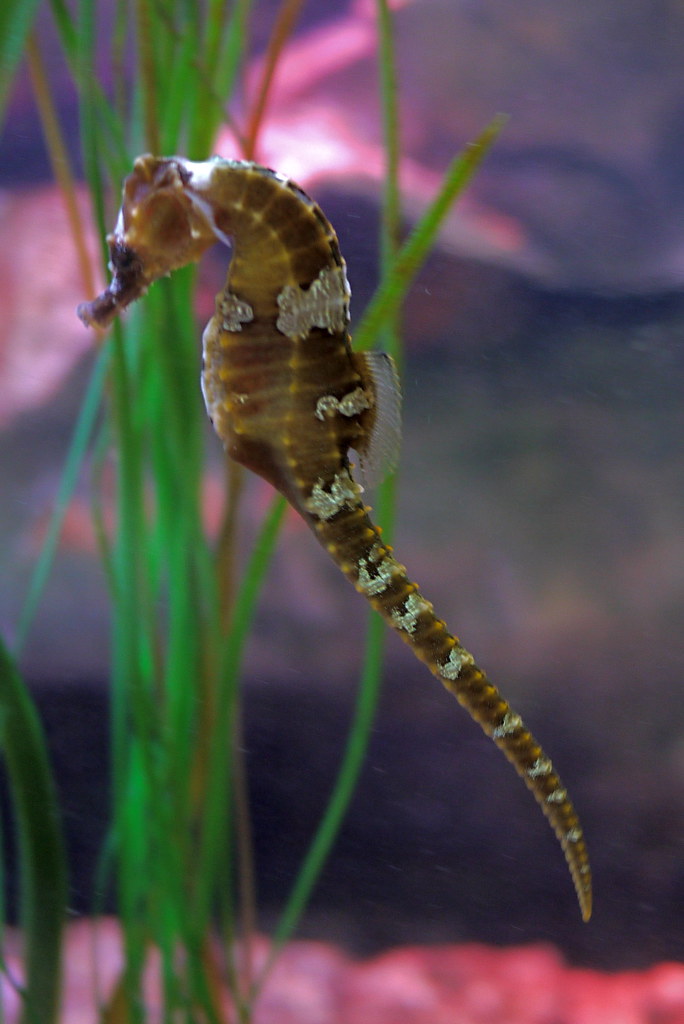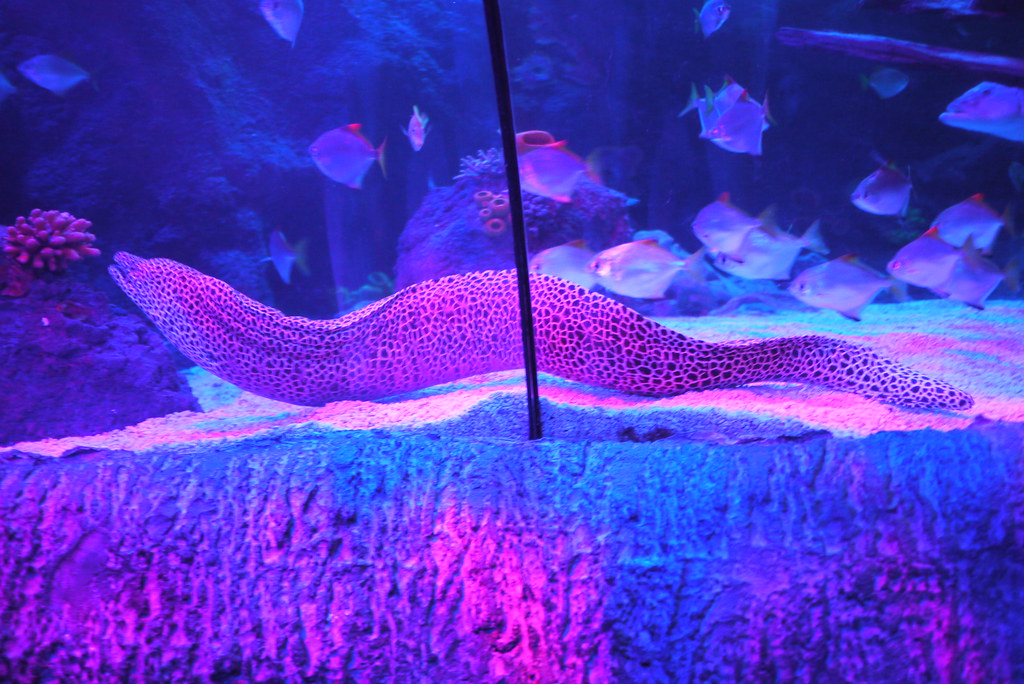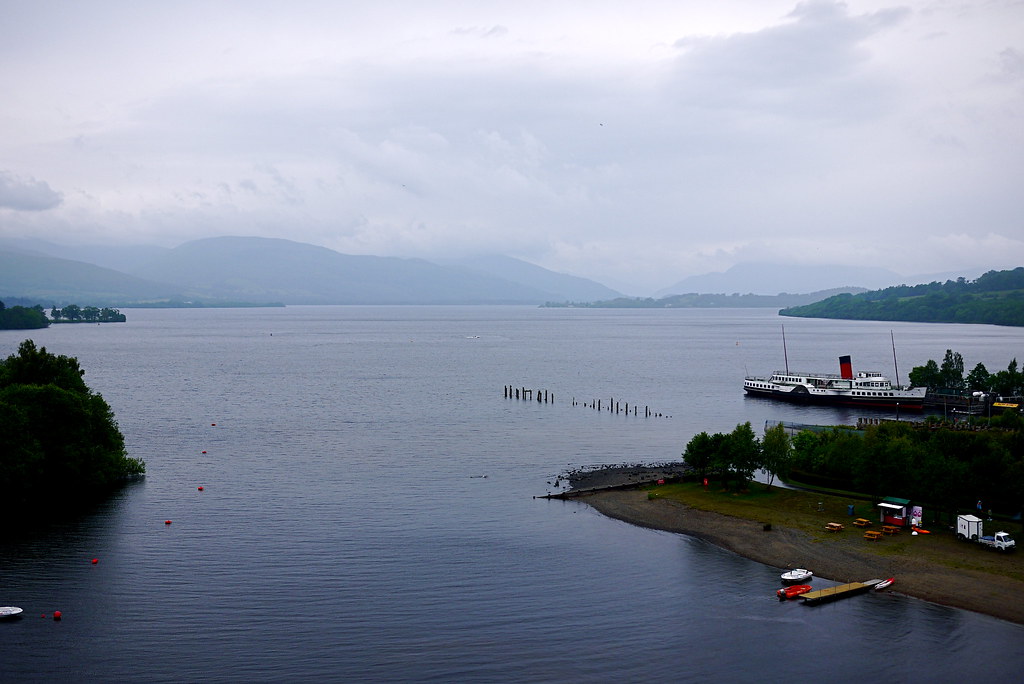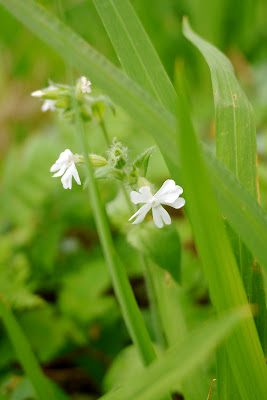I also splurged on my own copy of Lisa Bitel's Land of Women. I've tried to buy it before but the first time it failed to arrive (I suspect because the seller didn't want to ship it from the US at such a low price, then, when the exchange rate was very much in my favour). I'm still waiting for it, so we'll see if it turns up.
The third and last book I got is called The Sacred Tree: Ancient and Medieval Manifestations by Carole M. Cusack. It was only published last year and I've had my eye on it since I stumbled across it and found that Google Books has a good preview of it and saw that it has some good stuff about the sacred bile in Irish tradition, as well as some handy stuff on cosmogony. I'm a few chapters in and it's proving a useful read so far. Some of it I find myself frowning a little at but for the most part there are some things that have proved illuminating. I should probably get back to finishing off my library books first, but I keep picking at chapters here and there from book to book so I'm kind of making progress.
My next purchase will probably have to be a new bookcase...And maybe a small house extension so I have somewhere to put it...(I can dream).
Anyway, seeing as a lot of the books I've had deal with cosmological kinds of subjects I've been thinking a lot about that and how it all fits into what I do. With a neat bit of synchronicity a quote from the CR FAQ popped up in my tumblr dashboard, and it really struck a chord with me:
Contemplate the world as a cosmology of land, sea and sky, everpresent around you. Feel how you are connected to the three realms. Meditate on the well and tree that are at the center of the worlds and which link all things together; and upon the gateways to the otherworlds that can open in the center or at the edges.
As it happens, just as this turned up in my dashboard I'd started working on something that was pretty much right in this area. I'd had an itch that needed scratching for a while - I'd been feeling the need to make something for my shelf-shrine - and I'd just started trying my hand at making a candle holder out of clay. I wanted it to represent a sort of bile, to underscore the connection with my shelf-as-the-hearth, which I see as kind of filtering down from the concept of the sacred centre: As the bile is to the túath, a sacred centre for the people, so the hearth is to the home, a sacred centre for the household.
So while I was attempting to sculpt out the clay and put it all together in a way that hopefully won't set the house on fire, I found myself musing on this meditation from the CR FAQ. There's the Well of Segais, where the nuts of a hazel tree fall into the water and flow down the stream to get eaten by the salmon, and which can impart mystical inspiration if you eat them. In some versions it's not nuts that flow down the water but bubbles, and this possibly relates to the motif of fire-in-water...From the bubbling - perhaps boiling - water, we see the action of fire and water transform this mystical knowledge into a palatable form, and so on...So I sculpted out a representation of a well for the tealight to sit in.
I cut out the tree shape on a flat piece of clay so it would stand before the well and the light of the candle could shine through the tree shape and throw a larger tree shape across the room (in theory!). The tree stands tall at the centre of the túath, supporting it with its nuts and the shelter it provides. I've been wondering for a while whether or not the tree would represent the king or god of the túath, it being kinda phallic, or whether it represents the goddess of the túath. My gut feeling is that it represents the goddess, since she's at the heart of the land and the túath itself. The gods of the Gaels might wander around the landscape or settle down in their síd mounds, but it's the goddess the king was supposed to wed at his inauguration, and its beneath the bile that such rites are said to have taken place.
The piece of clay that has the tree cut into it I then shaped with a rounded top to suggest a kind of archway; a threshold and a boundary between to places, a liminal space between this world and the otherworld. It's at these places where people might best be able to experience some kind of communication with the gods, spirits or maybe ancestors, so it seemed apt.
Seeing as my sculpting skills are amateur at best, things were looking a bit delicate, shall we say, so I decided to use some leaf-and-wood decorated paper to découpage the whole thing. All that glue and a covering of paper should make things a bit sturdier and hold it all together a bit better. The back of the tree, facing where the well and candle are, I painted gold to help reflect and diffuse the light from the flame onto the rest of my shrine a little. Like I said, my craftsmanship leaves a lot to be desired so it's a very bespoke effort, but it's not so much the execution that counts than the doing, right?:
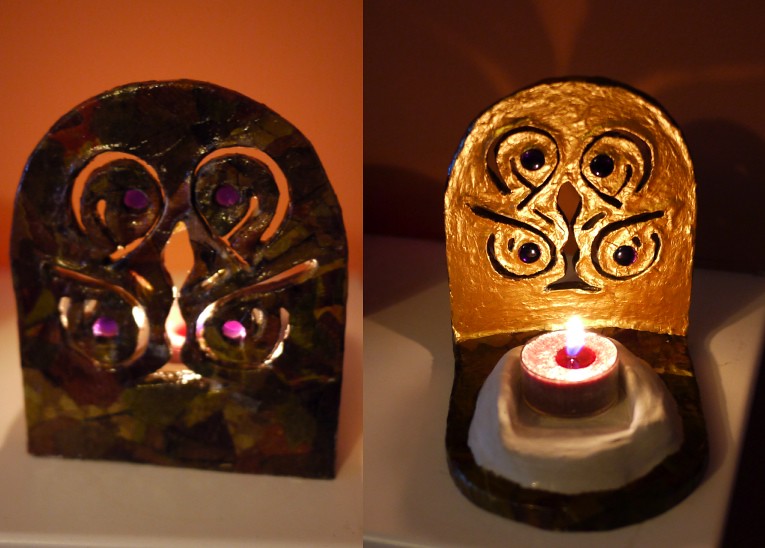 |
| Putting these photos side-by-side took way longer than it should have... |
If there is a centre, it implies a boundary; as the hearth stands at the centre of my domestic focus, so I go deiseal around the boundaries of my home to affirm not just my space, my property, but because without a periphery there can be no centre in the first place. The direction I go in is auspicious (arguably) because it follows the sun and the natural order of things. In recognising these things - the natural order, the way things are and our place in it all - we find the gateways between this world and the otherworld, where we might find revelation and wisdom.
Without looking at these very fundamental, basic things and finding an understanding of them, whatever we do will inevitably lack a certain depth or significance to us; as we grow and evolve our understanding of these things, they take on new meanings, shed new light on ourselves and our beliefs. Our experience and evolving understanding adds layers to what we do. We don't just go round things in a sunwise manner because it's traditional. We don't believe in offering good hospitality just because we're supposed to, we don't make our observances because it's the done thing, or talk in terms of land, sea and sky because it sounds cool and we're just that speshul. We do all this because they articulate something that's fundamental to us, just like the very concept of tradition itself does. We do not do for the sake of doing, just as we do not read book after book for the sake of intellectual wankery (even if it might seem that way sometimes...).
These traditions add depth to what we do, but more than that they help us to communicate with those we are honouring. These traditions and rituals help to articulate our worldview - they are an expression, a kind of language that becomes our own. Like any language it has its quirks, its own oddities of expression, strange idioms or ways of thinking that might seem alien to us. It can take time to learn. In Gàidhlg, you don't say that you are a doctor, you say a doctor is in you - ('s e dotair a th' annam - literally "A doctor is in me). Like any language it's important to understand the rules that govern it, not just which verbs to use in different contexts, but the proper order all of those words should go in, and so on. We can't use Gàidhlig words and make them into a sentence using English rules, because what we'd end up with wouldn't be Gàidhlig, it would be gibberish. Instead of imposing our own rules, we must learn those of the language we're learning. That can take time, but we can never hope to become fluent without learning the vocabulary and the rules that shape them.
Like any language, our rituals and traditions don't have to be lengthy and complex. We don't need to write a whole paragraph when a simple sentence will get our message across, but some of us might want to. Paragraphs can give more of a sense of what we really mean than a sentence can, perhaps. We can use big words or simple ones, but so long as the message stays the same does it matter? Sometimes, perhaps. Sometimes the occasion might call for big words and long paragraphs. But not always.
Our worldview is at the heart of what we do. Learning it can be difficult, especially when we let our preconceptions get away, or maybe even our fear that we can never truly get the hang of it (so why bother?). Without it, though, we can never hope to express ourselves as effectively as we might want to or need to.


